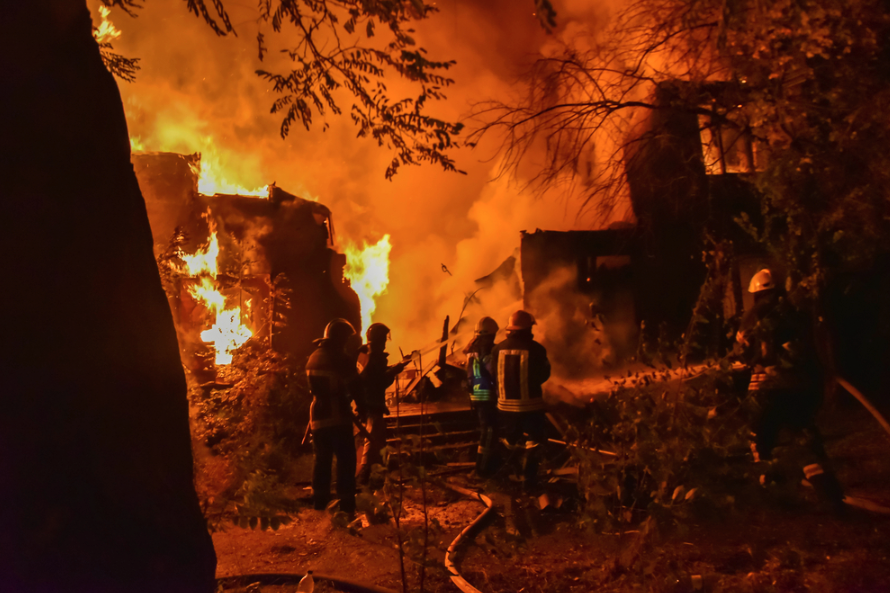 NOTE: As I write this on a July weekend in Portland OR… here’s today’s headline in the New York Times: “Pacific Northwest Faces Critical Fire Risk as Wildfires Burn”. About 1.7 million people are under fire danger warnings on Sunday as a heat wave continues to bake the region and several large blazes burn in Oregon.
NOTE: As I write this on a July weekend in Portland OR… here’s today’s headline in the New York Times: “Pacific Northwest Faces Critical Fire Risk as Wildfires Burn”. About 1.7 million people are under fire danger warnings on Sunday as a heat wave continues to bake the region and several large blazes burn in Oregon.
Welcome to our new abnormal. We aren’t going back to the stable climate we enjoyed… not anytime soon. So we must learn to adapt.
As wildfires grow in frequency, size and severity, insurers are raising premiums, or denying coverage altogether. Local fire fighting resources and federal assistance are spread thin. It makes sense for homeowners to take their fates in their own hands and protect their properties (and families) as best they can.
There are no fire proof homes – only fire resistant ones. Replacing flammable roofing, removing vegetation close to the house, and hardscaping near exterior walls can help protect against flying embers. Flying embers are the number one way wildfires enter homes.
Retrofitting roofs and exterior walls with fire-resistant materials can cost up to $100,000 or more (although many improvements can be made for much less).1 But doing so can save on homeowners insurance or even enable coverage in places where high fire risk would normally preclude eligibility.
According to a 2022 study, more than 7 million homes in the U.S. are already at risk of fire, a number that is expected to rise to nearly 13 million over the next 30 years.
“It’s a complicated situation, but what people do around and on their homes makes a big difference,” said Michele Steinberg, director of the wildland firefighting division at the nonprofit National Fire Protection Association (NFPA).
You Are Not Alone – No One is an Island
You can educate yourself on how to make your specific property fire resistant, but what about your surrounding community? If you do the right things, and your house is still standing after a wild fire, what about your neighbors? If they all lost their homes, your property becomes less attractive. Who wants to live in a burned out hellscape?
Much better if the whole neighborhood works together to expand that fire resistance to all of the homes. If you have a Homeowners Association (HOA), that’s the best place to start. If not, you’ll need to speak to neighbors one on one and get the word out at local events like farmer’s markets.
The NFPA has also created a program called Firewise USA where you can download a Fire Resilience Toolkit. And a neighborhood-wide risk assessment, identifying weak spots and eliminating fire hazards across adjacent properties. For instance, if a shared fence is made from wood, it could accelerate a fire’s spread. So the fence should be removed or replaced with a fire resistant one.
Wildfires are typically included in standard homeowners insurance. Coverages and terms vary, and insurers are increasingly withdrawing from high-risk areas.
Be sure you have the right amount of insurance to be able to rebuild your home and replace your belongings. That means just enough coverage and should be revisited every year. Let your agent know if you’ve remodeled or added on. Those improvements and/or additions must be included in your policy… and you will need to pay extra premiums for the additional coverage. Submit photos or video and create an up-to-date home inventory of valuable belongings and fixtures.2
Read the fine print in your policy. There may be coverages that aren’t necessary for your specific property. Ask for those coverages to be removed (some insurers will work with you, others won’t).
Be Prepared
Protecting property is important, but it is just property. Our most precious wealth is our family and our pets. Have go bags prepared for each family member (including Fido and Fluffy). Pack backpacks with water, food, first aid items, chargers, meds… anything you might need for at least three days.
Have at least two escape routes planned. Know exactly where you want to go when the time comes. Pay close attention to alerts and warnings regarding the location of the fire and the direction it’s moving. Your local fire department, the Disaster Recovery Center and the American Red Cross can point you to shelters.
Anticipate and Be Proactive
Each property, home and business will have specific vulnerabilities. Evaluate your exposure and determine which actions you need to take. Each property has multiple susceptibilities with varying degrees of potential damages.
You want to address the most dangerous vulnerabilities first. As conditions continue to change over time, you should periodically (e.g. once a quarter) reassess your situation and adjust your adaptation efforts and insurance coverages.
We have waited too long to take aggressive action. It remains to be seen whether action, significant and widespread enough, will happen soon enough to avoid catastrophe.
Meanwhile, the atmosphere will continue to heat and severe weather events, like wild fires, will continue to grow in intensity and frequency. So, be vigilant and proactive.
1 https://ibhs.org/strategy/overview/
BIO:
Sign up here to receive our weekly Crew Commentaries.
Bob Leonard is the Chief Content Officer at This Spaceship Earth and the Managing Consultant at Climate Foresight Advisory.
